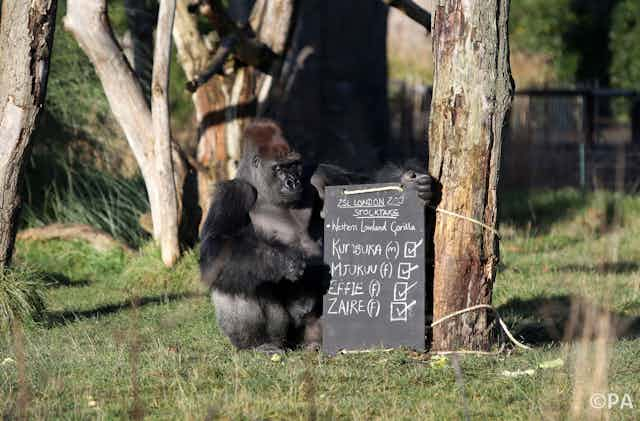Did Kumbuka, the silverback gorilla who escaped from his enclosure at London Zoo, go on a King Kong type rampage through the city? No. Was he even seen out of his enclosure by a member of the public? No. Yet looking at some of the coverage the day after his little sojourn into the back quarters of his enclosure, you’d think he had grabbed one of the Kardashian sisters and climbed to the top of The Shard with her.
I know dramatic headlines sell stories, but some perspective is needed about what happened.
The gorilla reportedly got into a non-public but secure area of his enclosure where he should not have been, perhaps after a door was left open. And London Zoo, being very responsible, put into action its animal escape procedure – despite the risk to public being minimal. No doubt the zoo thought it better to be safe than sorry, especially after the Harambe case at Cincinnati Zoo which saw the gorilla shot dead after a boy fell into his enclosure.
Back in the 1990s I was research coordinator at Edinburgh Zoo and never once, in the four years I worked there, was there a lockdown due to an animal escape. Of course animals will and do occasionally escape from zoos, but these are rare events. There are a few million animals housed in the world’s 10,000 zoos with each institution having a hundred or so enclosures on average. Now we need to multiply this by 365 days in a year and we come out with a number of 3.65m zoo enclosure days in a year. I think it is unreasonable not expect a few escapes given the scale of animal keeping by zoos. After all, good zoo enclosures are designed to let animals express as much natural behaviour as possible – they’re not meant to be maximum security prisons.
Zoo animals in well-designed enclosures should be supplied with all of the creature comforts they need, so why leave? Modern zoo enclosures are designed to promote animal well-being, not to punish their occupants – despite what some in the anti-zoo movement might say. I am not arguing here that zoos are Utopia, but rather that they can provide a good quality of life for their occupants.

The functions of the modern zoo are, as I always tell my students: conservation, education, research and leisure – all underpinned by good animal welfare.
Animals kept in poor conditions will often not have the behavioural skills necessary to survive even if they were released back into the wild, and so will be of limited conservation value. Poorly-treated animals won’t behave like their wild counterparts (or even those in good zoos), and so will have limited education value. There is no education value in a gorilla that spends its days displaying abnormal behaviour. In terms of research, most animals in poor conditions would only be of interest in determining how much their environment impacts on their on well-being – so, again, of limited value.
Zoos across much of the world are also increasingly savvy about animal welfare and aware of the effect poorly-kept animals have on the bottom line. Gone are the days when people laughed at chimpanzee tea parties.
Animal species are declining globally due to human activities, and the great apes, despite their genetic, physical and behavioural similarity to us are declining especially rapidly. Kumbuka, for instance, is a western lowland gorilla, a subspecies with the wonderful scientific name Gorilla gorilla gorilla which is found in west-central Africa. They’re the most common gorilla subspecies and they’re still listed as critically endangered. So while all sensible zoos would agree that the best place to conserve gorillas is in the wild, sometimes this is simply not possible due to political and economic instability in certain regions of the world.
Captive-bred animals are an insurance population. Insurance, such as car insurance, is one of those things we pay for hoping that we never need to use it. But there is an important difference here – zoos, by showing the wonder of animals close-up, can encourage people to behave more sustainably and to reduce the risk of needing to cash in this insurance.
To take just one example: many zoos now have education programmes to encourage visitors only to buy food made with sustainably-sourced palm oil. Palm oil production is one of the biggest threats to the gorilla’s cousin the orangutan.
So yes, London Zoo’s gorilla briefly escaped into a staff-only enclosure. It made for lots of great headlines. But, like the animals they keep, good zoos should be encouraged not beaten for the occasional mishap.

